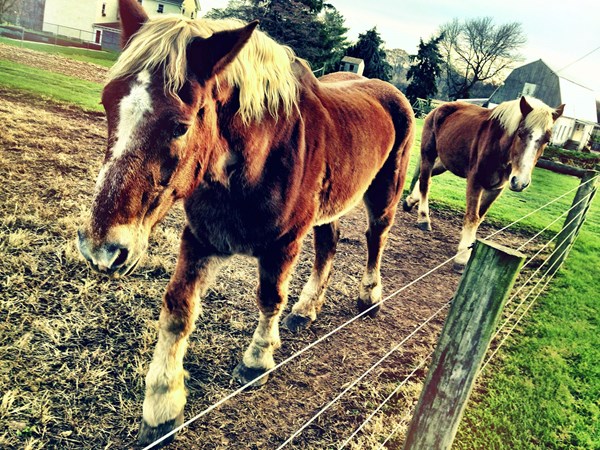 Credit: Thinkstock These results don’t prove that horses on drylots can get laminitis from eating weeds, but it does suggest that owners should consider removing or controlling weed growth in drylots to be sure horses are not getting an appreciable amount of dietary NSC from browsing these plants.
Credit: Thinkstock These results don’t prove that horses on drylots can get laminitis from eating weeds, but it does suggest that owners should consider removing or controlling weed growth in drylots to be sure horses are not getting an appreciable amount of dietary NSC from browsing these plants.Over-consumption of the nonstructural carbohydrates (NSC) found in grain or lush grass is a common cause of equine laminitis, an inflammatory condition that causes excruciating pain in hooves. Even mild cases of laminitis cause intense suffering, and horses that are seriously affected must often be euthanized.
One of the most common management steps for at-risk horses is to limit NSC consumption by eliminating grain meals and curtailing or stopping free access to grazing.
As well as carbohydrate overload, other factors can trigger laminitis in otherwise healthy horses. Obese equines as well as those with metabolic syndrome are at higher risk, and even careful management can’t prevent all laminitis cases. One of the most common management steps for at-risk horses is to limit NSC consumption by eliminating grain meals and curtailing or stopping free access to grazing. Many of these horses are confined to drylots and fed only measured quantities of hay that has been analyzed and found to contain low levels of NSC. Somewhat surprisingly, some horses kept in drylots have still ended up with laminitis.
Although drylots are basically denuded of all grass, a few hardy weeds can usually be found growing sparsely in these small pens. Horses might scorn these rough, stemmy plants if they had an alternative, but with hay as the only other choice, they often will sample anything that’s growing in their meager area. Could consumption of these weeds possibly be implicated as a cause of laminitis? In an attempt to track down the answer, a research project at the University of Minnesota was designed to find the NSC content of common weeds found in Midwestern drylots.
Researchers collected weeds from drylots at 10 farms in Minnesota and Wisconsin during the spring, summer and fall seasons. Prostrate knotweed, plantain, redroot pigweed, common ragweed, cinquefoil and purslane were the most common among the 27 different weeds collected. They sent the weeds to a forage testing laboratory, which determined average, maximum and minimum crude protein, structural carbohydrate and NSC content for each type.
When the researchers compared the NSC level of the weeds to the recommended maximum NSC level of 12% for the diets of horses that have been diagnosed with chronic laminitis or metabolic syndrome, they found that maximum amount of NSC content exceeded this recommendation in all weed species. The weeds showed a high level of crude protein and low structural carbohydrate content that, along with NSC level, made them palatable to horses, especially those that had been on a hay diet.
For the six most common weeds, maximum NSC ranged from 14% (purslane) to 30% (plantain). NSC was highest in the fall season for all weeds, a natural pattern for many other plants.
These results don’t prove that horses on drylots can get laminitis from eating weeds, but it does suggest that owners should consider removing or controlling weed growth in drylots to be sure horses are not getting an appreciable amount of dietary NSC from browsing these plants.
For more nutrition information visit Kentucky Equine Research online.


